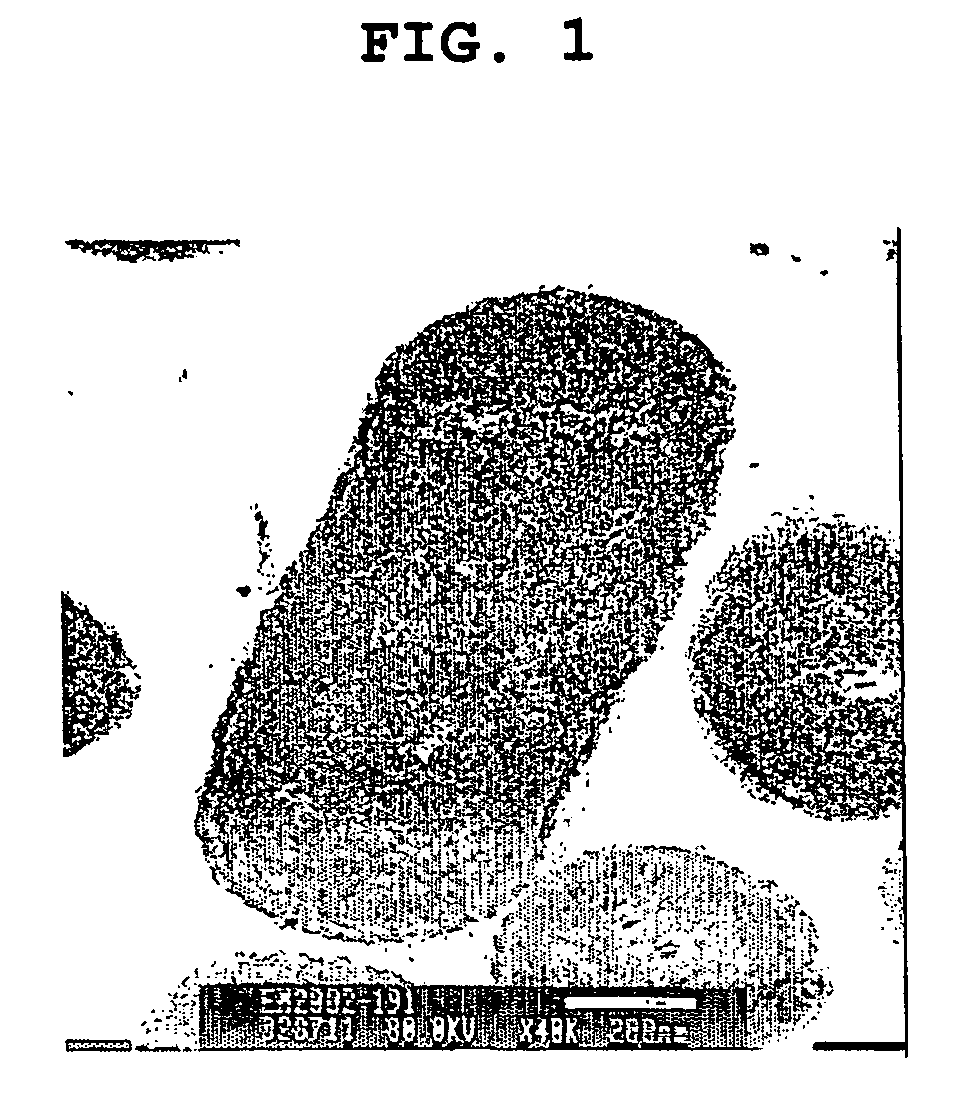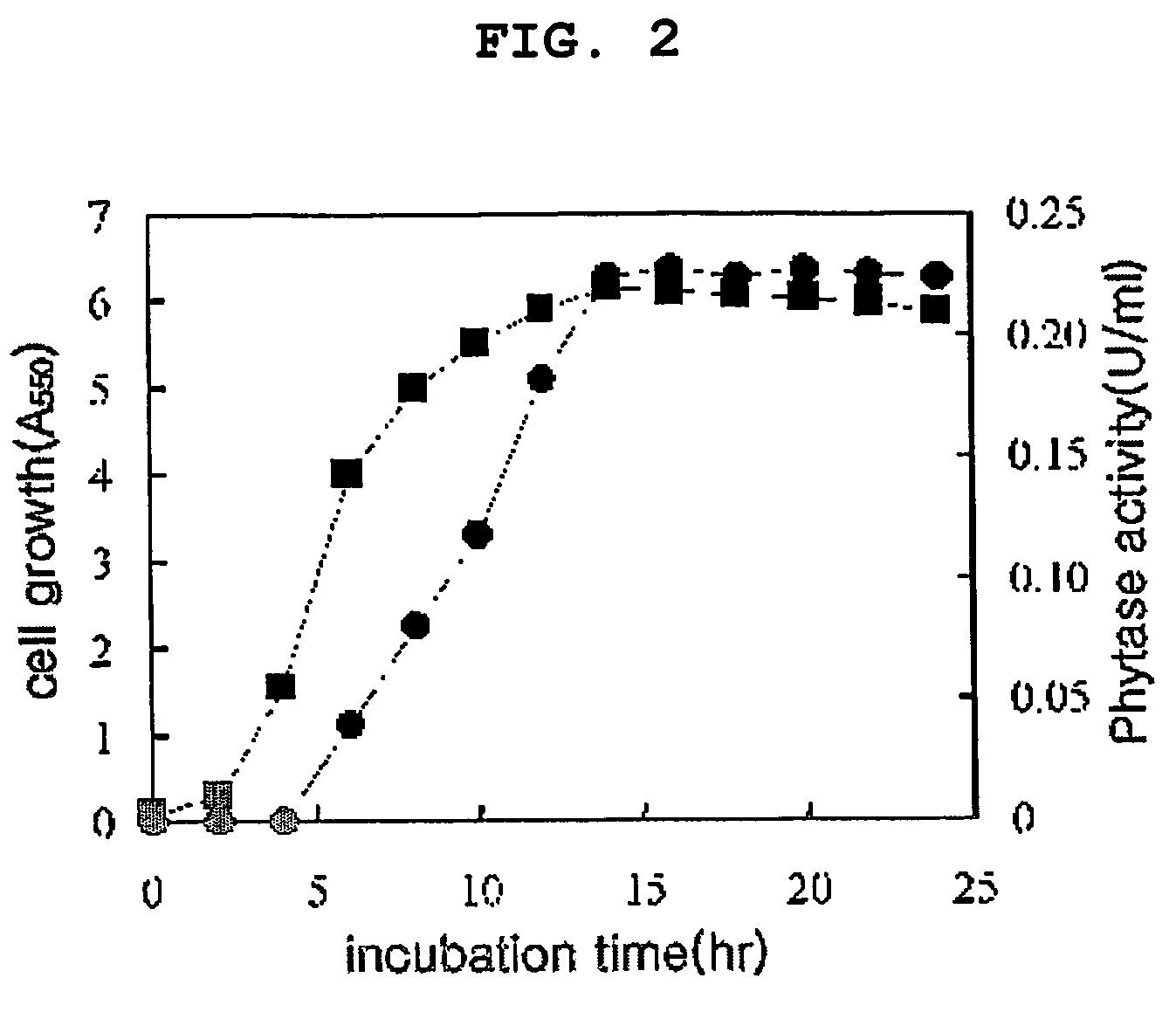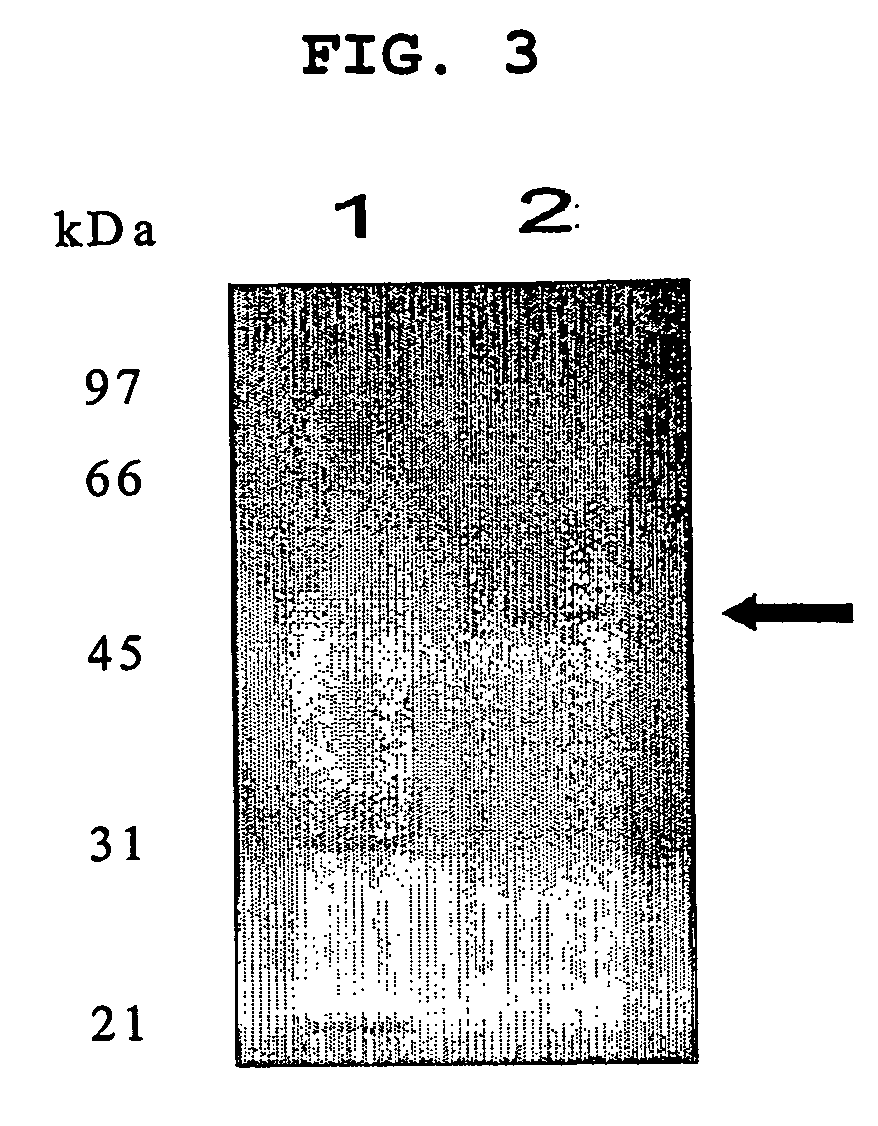Phytase produced from Citrobacter braakii
a technology of phytase and citrobacter braakii, which is applied in the field of new phytase enzymes, can solve the problems of huge nutrition loss in feed, low utilization rate of vegetable phosphorus, and inability to grow seaweeds, so as to improve the digestion and absorption of feed, increase the weight of domestic animals, and enhance the effect of milk production
- Summary
- Abstract
- Description
- Claims
- Application Information
AI Technical Summary
Benefits of technology
Problems solved by technology
Method used
Image
Examples
example 1
Separation of Phytase-producing Strains
[0067]The present inventors separated phytase-producing strains from samples taken from seawater and wastewater treatment plants near Busan, Korea. Particularly, in order to find phytase-producing strains, samples were taken from wastewater treatment plants near entry of Gwanganli beach and seawater near Busan, Korea, for example, Songjung, Haeundae, Daebyun, Sinsundae, Iegidae, Nakdong estuary, etc. The samples were smeared on artificial seawater plate media, followed by cultivation in a 30° C. incubator for 18 hours. Then, different colonies in various forms were selected. Each colony was smeared on PSM medium (1.5% D-glucose, 0.5% calcium phytate, 0.5% NH4NO3, 0.05% MgSO4.7H2O, 0.05% KCl, 0.001% FeSO4.7H2O, 0.01% MnSO4.4H2O) containing 1.5% agar, followed by cultivation at 30° C. for 2 days. Strains having clear zones, which were generated around colonies, were primarily selected. The selected strain was inoculated in 5 ml of artificial seaw...
example 2
Analysis of Characteristics of YH-15 Strain Producing a Phytase
[0071]The present inventors analyzed characteristics of YH-15 strain, which was separated in the above Example 1, producing a phytase having the highest enzyme activity.
[0072]YH-15 strain was confirmed to be a gram-negative bacterium through Gram staining. The strain was a rod type bacterium having a flagellum and the cell size was 0.5˜1.4 μm, which was observed under an electron microscope (FIG. 1). The present inventors further investigated biochemical and physiological characteristics of the strain. As a result, the strain was a gram-negative, facultatively aerobic microorganism that could be growing with or without oxygens and showed positive reaction to ornithin decarboxilase but was negative to indole generation. Other biochemical and physiological characteristics of the strain were shown in Table 2. The present inventors also analyzed 16S rRNA sequence of the strain, resulting in that the strain had a base sequenc...
example 3
Separation and Purification of Phytase Produced by Citrobacter braakii YH-15
[0076]In order to purify the phytase produced by Citrobacter braakii YH-15 strain identified in the above Example 2, the present inventors cultured the strain under the optimal culture conditions and separated the enzyme.
Production of Phytase
[0077]Citrobacter braakii YH-15 of the present invention was cultured in LB medium containing 1% tryptone, 0.5% yeast extract and 0.5% NaCl at 30° C. for 15 hours, which was called seed-culture solution. The seed-culture solution was inoculated again (1%) to produce the enzyme. The phytase activity was measured with the same method as used in the above Example 1. As a result, the highest phytase activity was observed 16 hours later and at that time the produced enzyme was 0.2 unit / ml.
Separation and Purification of Phytase
[0078]The present inventors purified phytase produced by Citrobacter braakii YH-15. Particularly, cells collected by centrifugation after being cultur...
PUM
| Property | Measurement | Unit |
|---|---|---|
| molecular weight | aaaaa | aaaaa |
| pH | aaaaa | aaaaa |
| pH | aaaaa | aaaaa |
Abstract
Description
Claims
Application Information
 Login to View More
Login to View More - R&D
- Intellectual Property
- Life Sciences
- Materials
- Tech Scout
- Unparalleled Data Quality
- Higher Quality Content
- 60% Fewer Hallucinations
Browse by: Latest US Patents, China's latest patents, Technical Efficacy Thesaurus, Application Domain, Technology Topic, Popular Technical Reports.
© 2025 PatSnap. All rights reserved.Legal|Privacy policy|Modern Slavery Act Transparency Statement|Sitemap|About US| Contact US: help@patsnap.com



